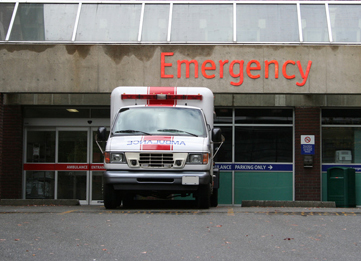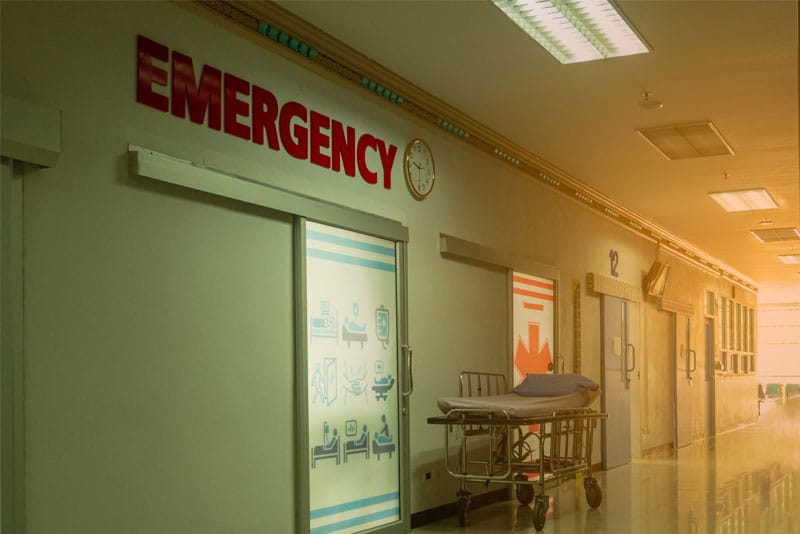 Emergency Rooms (ERs) designed to treat life-threatening illnesses are getting overcrowded now as more Americans are relying on ERs than visiting a doctor. A study published recently in the International Journal of Health Services has found that Emergency departments (EDs) are increasingly a major source of medical care in the United States. Based on the data from the National Ambulatory Medical Care Survey and National Hospital Discharge Survey databases, it was found that EDs contributed an average of 47.7% of the medical care delivered in the U.S. and that this percentage increased steadily over the 14-year period. ERs can be hectic, and various kinds of medical reports generated in an emergency room are often documented by outsourcing medical transcription tasks.
Emergency Rooms (ERs) designed to treat life-threatening illnesses are getting overcrowded now as more Americans are relying on ERs than visiting a doctor. A study published recently in the International Journal of Health Services has found that Emergency departments (EDs) are increasingly a major source of medical care in the United States. Based on the data from the National Ambulatory Medical Care Survey and National Hospital Discharge Survey databases, it was found that EDs contributed an average of 47.7% of the medical care delivered in the U.S. and that this percentage increased steadily over the 14-year period. ERs can be hectic, and various kinds of medical reports generated in an emergency room are often documented by outsourcing medical transcription tasks.
Some reasons for overcrowding in ERs are –
- because they can get the care they need
- not being a doctor, patients aren’t very good judges of whether a condition is worthy of an ER visit
- as it is more efficient time-wise than seeing multiple physicians to diagnose an ailment
- as ERs are required by law to take any patient regardless of what insurance they have
It has been noted that states that chose to expand Medicaid witnessed more ER visits, as many doctors don’t take Medicaid.
According to the American College of Emergency Physicians, U.S. ED visits are expected to climb to about 150 million in 2017, up from 141.4 million in 2014. The spike is partly due to coverage expansions under the Affordable Care Act, an aging population and an increase in opioid overdoses.
ERs and the Holiday Season
Several reports indicate that ER visits spike during the holiday season, especially on Thanksgiving Day. According to the US Consumer Products Safety Commission, an estimated 36,729 people across the US went to the ER on Thanksgiving Day in 2016.
Dr Erick Eiting, who directs emergency medicine at Mount Sinai Beth Israel in New York estimates that emergency rooms see a 5-10% uptick in patients over the holiday season. The major drawback is that doctors working in overcrowded emergency rooms are often forced to care for more patients in the same amount of time, which may lead to physician burnout and patient safety issues. As overcrowded ERs are dangerous with possibility for more patients to die, Dr. Eiting recommends that holiday revelers avoid the ER unless they’re dealing with a life-threatening emergency like chest pain, shortness of breath, difficulty speaking or difficulty moving arms and legs, or signs of a stroke.
Long Wait Times – a Concern
 An analysis published by NBC10 Investigators has identified the 3 hospital emergency rooms with the longest wait times are ERs in Pennsylvania, New Jersey and Delaware. While the median wait across the country is about 30 minutes, in Pennsylvania, it’s 22 minutes, New Jersey – 25 minutes, and in Delaware – 34 minutes. With such long wait times, possibilities are more for serious medical conditions to go untreated.
An analysis published by NBC10 Investigators has identified the 3 hospital emergency rooms with the longest wait times are ERs in Pennsylvania, New Jersey and Delaware. While the median wait across the country is about 30 minutes, in Pennsylvania, it’s 22 minutes, New Jersey – 25 minutes, and in Delaware – 34 minutes. With such long wait times, possibilities are more for serious medical conditions to go untreated.
To curb unnecessary and costly ER visits, several health insurers recommend some solutions. Blue Cross-Blue Shield insurer recommends customers in a few U.S. states to go to the hospital only in a real emergency such as a heart attack, stroke and major bleeding. Anthem, the nation’s second-largest insurer, wants patients to consider alternatives such as drugstore clinics, nurse advice hotlines or telemedicine. According to Dr. Craig Samitt, Anthem’s chief clinical officer, “common medical ailments” that the average person knows should not be seen in an emergency room.
Doctors are of the opinion that ER isn’t the best option for minor complaints such as sinus infections, rashes or ankle sprains. They recommend seeing a family doctor who knows the person’s medical history.
Despite cost, ERs are still a relief for patients as they provide medical attention for emergency situations that are severe or life threatening. Emergency room medical transcription services are available to help these departments manage and maintain up-to-date medical records.


